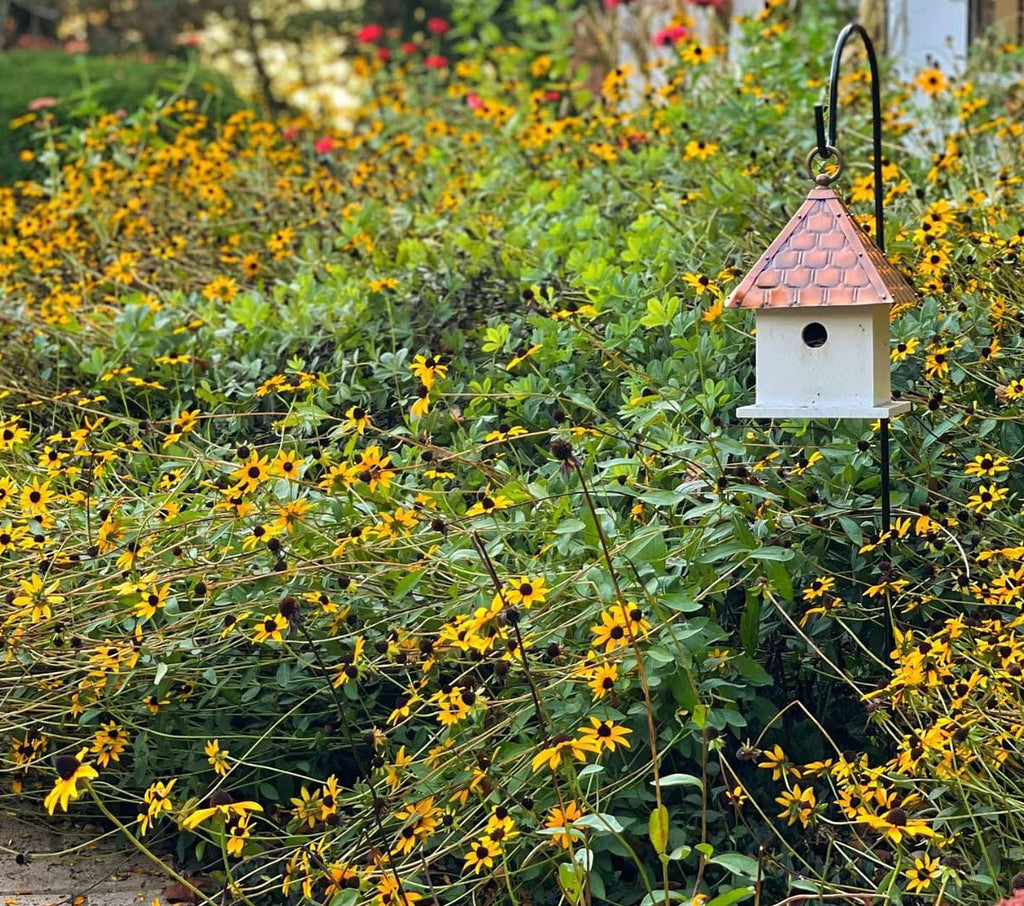Gardens have always been an important and cherished human experience. Across time and across cultures, wherever there have been people, there have been gardens, and there has been the science - and art - of garden design.
Linking form and function, gardens have either provided sustenance or beauty - or both. Whether it be the terraced gardens of the Andes, market-gardens of the Mediterranean, Zen gardens of Asia, or the fairy-tale naturalism of a formal English garden, people from across the world value the personal expression and inner peace a garden represents.
What Kind Of Garden Do You Want?
Gardening and garden design are two interconnected, but very different topics. The plants you choose to grow in your garden will primarily come down to the local climate, soil type, and topography, among other factors. Good Directions always recommends planting species native to your local area, as these will not only be more successful, but also contribute positively to your local ecosystem.

When it comes to garden design, you are only limited by the amount of space you have, your budget and your imagination. When planning your garden, it’s important to keep a few practical considerations in mind.
Seek Harmony with Nature
One way of looking at garden design is as an art piece where the medium is the natural world. Look at your space – does it have natural rock outcroppings or established native plant species that can be incorporated into your design? Use native plants that enhance the ecosystem including nourishing your local wildlife. Sustainability is important and at Good Directions, we craft all of our garden art from high-quality, eco-friendly materials like mango hardwood, copper and brass. Always sturdy, long-lasting, easy to clean and rust and stain-free, copper and brass lend sophistication and an elevated aesthetic to any outdoor space.

To truly seek harmony with nature in your garden design, consider incorporating elements that promote biodiversity and support local wildlife. This could include adding birdhouses, feeders, and baths to attract a variety of different bird species, or planting pollinator-friendly flowers to attract bees and butterflies to your yard.
Practice Practicality and Balance
Your garden is a place you want to spend time beautifying. It should delight the senses and inspire wonder. Even the act of gardening itself is meditative to many people, so paying attention to the practical needs of the space you design such as the location of sun and shade, the availability of a water source, and the type of soil in different parts of the yard is crucial. Planting the wrong species in the wrong area will only lead to frustration or a garden that is not self-sustaining. Take the time to really research and plan your space before breaking ground. Good Directions has many gardening ‘helpers’ such as hose storage pots, boot trays, trug baskets and more to help with the practical aspects of creating a thriving space that brings you joy.

Find Beauty in Form and Function
Gardens need to be nurtured and cared for, but are also to be enjoyed by all the senses. Every garden, whether it's for growing healthy foods or just intended as a beautiful space, requires some amount of practicality in its design, care and maintenance. Garden design is all about intentional aesthetic choices, which should be reflected even in the practical accouterments of one's day-to-day gardening. Take, for example, our rain chains. A sensory take on the typical downspout, rain chains celebrate nature, turning precipitation runoff into a musical display of sights and sounds, while redirecting the main flow of water away from the house and sensitive plants. The water from the chains can also be collected and reused later as nature’s ‘helping hand’ to nourish the dryer areas of the garden.

In addition to caring for the practical needs of your garden, it's equally as important to strive for balance in your design. A garden that is too chaotic or cluttered can be very overwhelming, while a garden that is too sparse can be boring. By cleverly using a variety of textures, colors, and shapes, you can create a garden that is both stunning and harmonious! Consider grouping plants together based on height, bloom time, or color, and even adding things like garden art or birdhouses to create focal points. With a little planning and creativity you can create a garden that is both beautiful and balanced.
Celebrate Time and Timelessness
Nature teaches us much about impermanence, but also that what is well-rooted can endure. We celebrate the cycle of nature through our gardening and garden design, nurturing a space that grows and changes with us and may, hopefully, outlast us to be cherished by others. A well thought out garden design will showcase the various seasons and move through them with grace. An easy way to celebrate timelessness is by observing the birth, growth and sleep of the birds that frequent your yard. Harmonizing with the birds by attracting them to your garden or yard comes with many benefits, both ecological and emotional. Even a simple birdhouse or bird feeder is a great way to invest little and be rewarded greatly.
Bird-watching is also a wonderful way to connect with the natural world and celebrate the timelessness of nature. Watching birds in your yard or garden lets you witness the birth and growth of new generations of birds each year, and allows you to marvel at these species that have thrived for countless generations. Bird-watching is a hobby that can be enjoyed all year-round, too, giving you a connection to nature that is increasingly important in our fast-paced and technology-driven world.

At Good Directions, we love gardening and garden design. We hope these suggestions inspire you to design your own garden masterpiece and incorporate some of our meticulously-crafted products into your garden today.

